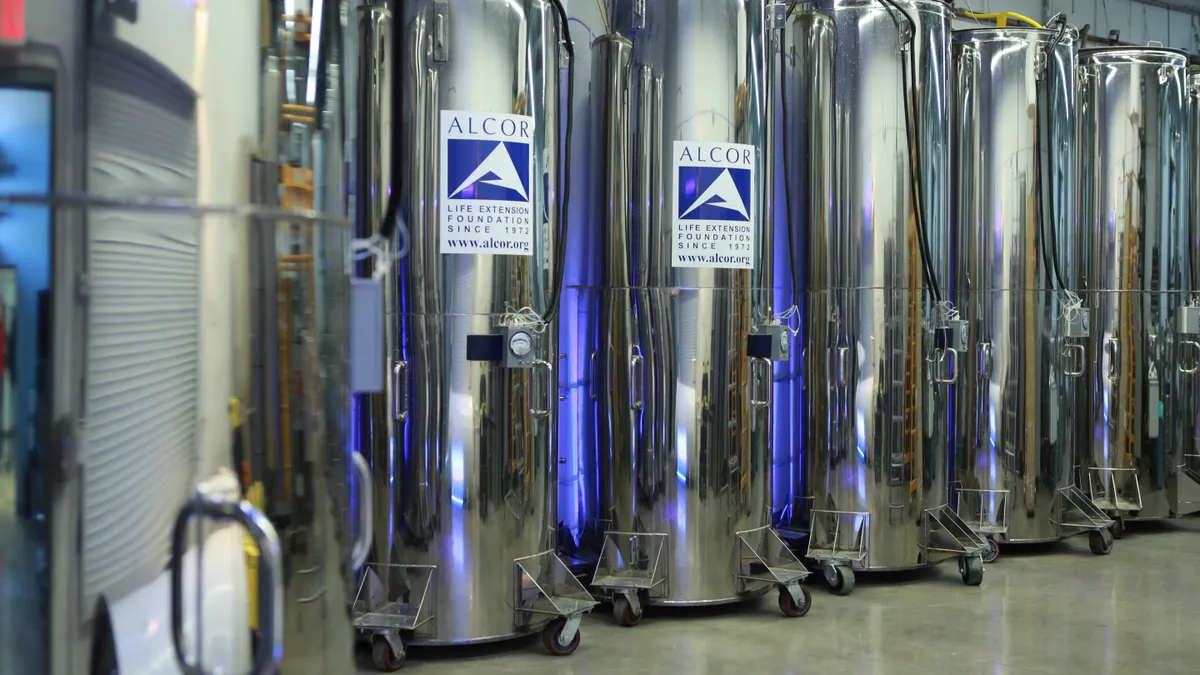Cryonics- the practice of freezing people’s bodies to revive them in the future- is commonly used in science fiction stories. But while most people have heard about Captain America returning to life after being frozen for seventy years, some believe it could become a reality.
The first cryogenically frozen man.
Since its inception in the late 1960s, cryonics has come a long way, and preservation methods have significantly improved.
Of all the hundreds of people who became cryonauts in the late 1960s, Dr. James Hiram Bedford is the only survivor.
Bedford was a professor of psychology at the University of California at Berkeley and died of kidney cancer on January 12, 1967. Since 1991, his body has been preserved at the Alcor Life Extension Foundation in Arizona, USA. When it was first conserved, patients were systematically frozen. But today, they are subjected to vitrification, a process of freezing the body using ice-resistant chemicals so that the body hardens without forming ice.
The process involved injecting the body with a solvent dimethyl sulfoxide a few hours after death, placing it in a Styrofoam box with dry ice, and then in a chamber filled with liquid nitrogen.
There is a horrific history of human cryopreservation.
One cryonics operation in California, USA, was led by Robert Nelson. His first four clients were not placed in liquid nitrogen containers but lay on dry ice in a morgue. The son of one of those clients decided to retrieve his mother’s corpse. The mother’s body lay on dry ice in his truck for an undetermined amount of time, after which he buried her.
Next, the undertaker and Nelson decided to put the remaining three bodies into a liquid nitrogen capsule, but another body already occupied it. So they spent an entire night placing four bodies that may have been affected by the thaw into the tablet. Nelson periodically refilled the capsule with liquid nitrogen for a year until he stopped receiving money from the families. He then removed the bodies from the capsule, leaving them to thaw and rot in a crypt beneath the cemetery.
Nelson’s second capsule contained another group of cryonically-preserved people, but it malfunctioned, and no one noticed. The people’s bodies thawed out over time but likely froze for several years. In general, Nelson’s patients did not survive. He later admitted that he went bankrupt, made terrible decisions, and failed in his endeavor.
The capsules needed to be better designed and have uninsulated pipes. Therefore, the bodies in them would thaw, move around, and then freeze again. This caused the skin to stick to the walls of the container. The only way to detach them was to thaw the bodies entirely before freezing them again.
Is it possible to preserve a body in ice?
Proper preservation is another major hurdle in cryonics. You can store food as ideally as possible, but it won’t keep for years in the freezer. Cold temperatures can slow the decomposition process but not stop it completely.
In 1983, Alcor removed the heads of three cryonauts (some cryonauts believe that only the authorities need to be preserved because future doctors will be able to create a new body for them). Because they decapitated the frozen corpses, the researchers could study the thawing bodies’ state. The results were not favorable.
The two warmed cadavers began to have cracked layers of skin and fat. Blood vessels had ruptured. But the insides looked even worse. Virtually every organ system was destroyed. The third body thawed more slowly, looking better on the outside, but the knowledge was even worse. The heart was ripped open, the organs cut off, and the spinal cord severed in three places.
The Alcor researchers concluded it would require highly advanced medical technology to treat this deterioration. Nevertheless, the study of cryonics is fascinating, especially for those who love science fiction, are optimistic about the future, and choose any chance to continue enjoying life regardless of the odds.

 Discuss
More news
Discuss
More news


